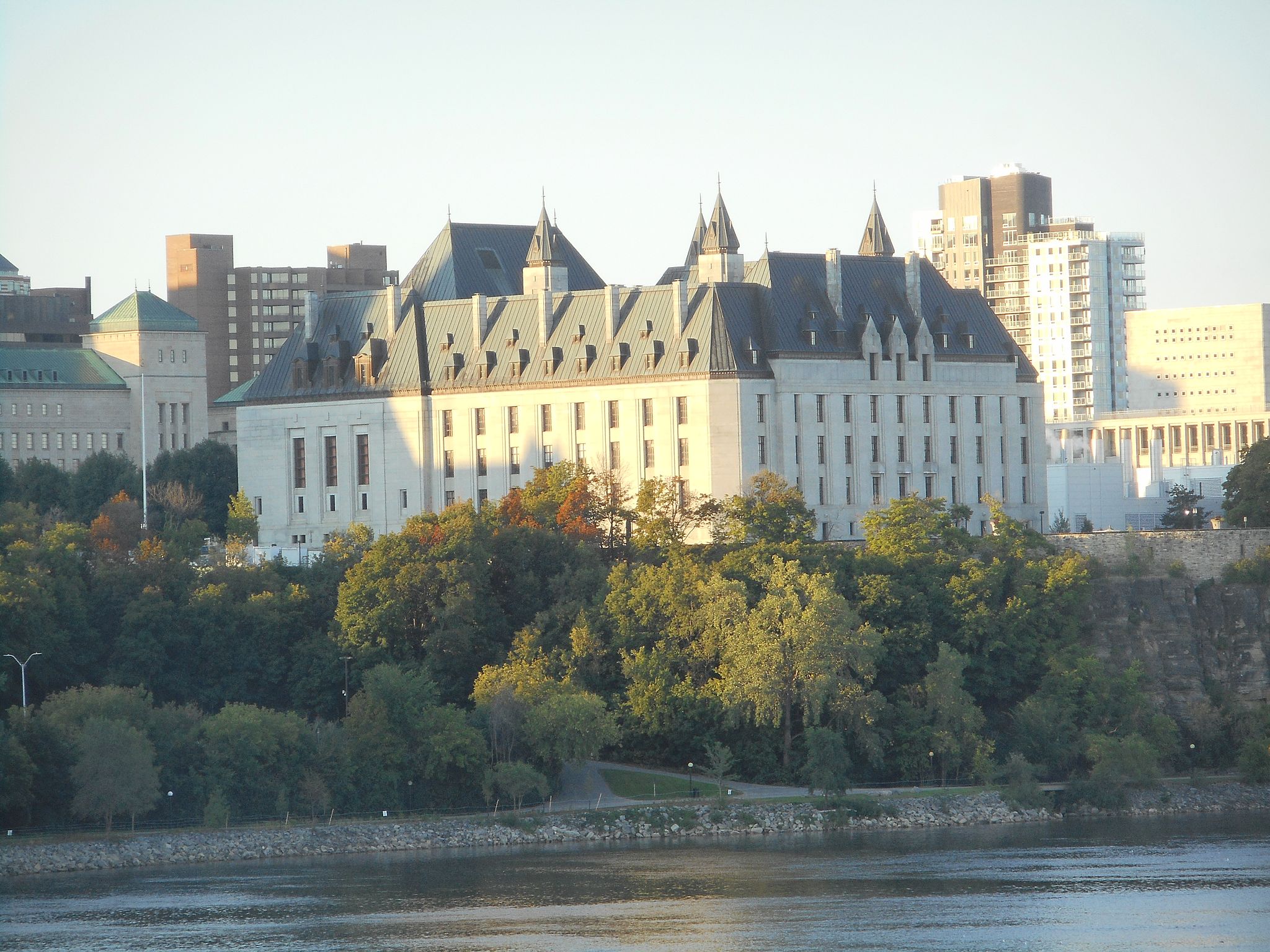Browse "Things"
-
Article
Simon Fraser University
SFU's academic programs emphasize an interdisciplinary approach to traditional and newer disciplines, and the university operates year-round on a trimester system.
"https://d2ttikhf7xbzbs.cloudfront.net/media/media/c94ad56d-7926-4f6e-b236-0cdcd4e99177.jpg" // resources/views/front/categories/view.blade.php
https://d2ttikhf7xbzbs.cloudfront.net/media/media/c94ad56d-7926-4f6e-b236-0cdcd4e99177.jpg
-
Article
Simple Plan
Simple Plan is a rock band that formed in Montréal, Qué, with Pierre Bouvier (vocals), Chuck Comeau (drums), Jeff Stinco and Sebastien Lefebvre (guitars) and David Desrosiers (bass).
"https://d2ttikhf7xbzbs.cloudfront.net/media/media/f27e3f3a-0ed6-4522-a2dd-00a23bef66f5.jpg" // resources/views/front/categories/view.blade.php
https://d2ttikhf7xbzbs.cloudfront.net/media/media/f27e3f3a-0ed6-4522-a2dd-00a23bef66f5.jpg
-
Article
Simple Plan
Simple Plan. Pop-punk band, formed in 1999 in Montreal, Que. by Pierre Bouvier (vocals), Chuck Comeau (drums), David Desrosiers (bass), Jeff Stinco and Sebastien Lefebvre (guitars).
"https://d2ttikhf7xbzbs.cloudfront.net/media/media/f27e3f3a-0ed6-4522-a2dd-00a23bef66f5.jpg" // resources/views/front/categories/view.blade.php
https://d2ttikhf7xbzbs.cloudfront.net/media/media/f27e3f3a-0ed6-4522-a2dd-00a23bef66f5.jpg
-
Article
Simpsons Limited
Simpsons, Limited with head offices in Toronto, was the present-day successor to the dry goods store opened in 1872 by Robert SIMPSON in Toronto. Originally averse to the idea of running a "department store," Simpsons eventually added shoe and specialty food departments and a mail order business.
"https://development.thecanadianencyclopedia.ca/images/tce_placeholder.jpg?v=e9dca980c9bdb3aa11e832e7ea94f5d9" // resources/views/front/categories/view.blade.php
https://development.thecanadianencyclopedia.ca/images/tce_placeholder.jpg?v=e9dca980c9bdb3aa11e832e7ea94f5d9
-
Article
Singh Case
In the 1985 Singh case (Singh v. Minister of Employment and Immigration), the Supreme Court of Canada ruled that the legal guarantees of the Charter of Rights and Freedoms apply to “everyone” physically present in Canada, including foreign asylum seekers. The court also found that refugees have the right to a full oral hearing of their claims before being either admitted into the country or deported. The decision drastically changed the way refugees are dealt with in Canada. (See also Canadian Refugee Policy.)
"https://d2ttikhf7xbzbs.cloudfront.net/media/media/7ac02b0f-118b-4ccb-b6dc-81f218b68954.jpg" // resources/views/front/categories/view.blade.php
https://d2ttikhf7xbzbs.cloudfront.net/media/media/7ac02b0f-118b-4ccb-b6dc-81f218b68954.jpg
-
Article
Singing and Voice Teaching
Singing and voice teaching. An examination of the development of the art of singing in Canada from its earliest documented incidences to its flourishing state in the late 20th century.
"https://development.thecanadianencyclopedia.ca/images/tce_placeholder.jpg?v=e9dca980c9bdb3aa11e832e7ea94f5d9" // resources/views/front/categories/view.blade.php
https://development.thecanadianencyclopedia.ca/images/tce_placeholder.jpg?v=e9dca980c9bdb3aa11e832e7ea94f5d9
-
Article
Singing Schools
The 18th-century US institution of local singing classes for sacred music had its counterpart in the Maritimes and in some parts of both Lower and Upper Canada between the 1770s and Confederation.
"https://development.thecanadianencyclopedia.ca/images/tce_placeholder.jpg?v=e9dca980c9bdb3aa11e832e7ea94f5d9" // resources/views/front/categories/view.blade.php
https://development.thecanadianencyclopedia.ca/images/tce_placeholder.jpg?v=e9dca980c9bdb3aa11e832e7ea94f5d9
-
Article
Singing Schools
Singing schools. A New-World echo of an English movement to renovate psalm-singing. The schools appeared first in New England in the early 18th century.
"https://development.thecanadianencyclopedia.ca/images/tce_placeholder.jpg?v=e9dca980c9bdb3aa11e832e7ea94f5d9" // resources/views/front/categories/view.blade.php
https://development.thecanadianencyclopedia.ca/images/tce_placeholder.jpg?v=e9dca980c9bdb3aa11e832e7ea94f5d9
-
Article
Sinking of HMCS Esquimalt
HMCS Esquimalt was the last Canadian warship lost to enemy action in the Second World War. The ship was on an antisubmarine patrol around the approaches to Halifax harbour when it was torpedoed by German submarine U-190. Esquimalt sank on 16 April 1945; in total, 44 of 71 crew members died — many of them from exposure while waiting to be rescued.
"https://d2ttikhf7xbzbs.cloudfront.net/media/media/462169b7-3005-4458-85d7-605eb8f68e2d.jpg" // resources/views/front/categories/view.blade.php
https://d2ttikhf7xbzbs.cloudfront.net/media/media/462169b7-3005-4458-85d7-605eb8f68e2d.jpg
-
Article
Sinking of HMHS Llandovery Castle
On the evening of 27 June 1918, while sailing from Halifax, Nova Scotia, to Liverpool, England, the Canadian hospital ship Llandovery Castle was torpedoed and sunk by a German U-boat (U-86). Of the 258 crew and passengers, only 24 survived. Almost all the Canadian Army Medical Corps personnel were killed: six male officers, 64 enlisted men and 14 nursing sisters. Only one lifeboat escaped; the rest were either sucked under as the ship sank or attacked by the U-boat. The submarine’s officers were later charged with committing a war crime.
"https://d2ttikhf7xbzbs.cloudfront.net/ASW/VictoryBondsPosterLlandoveryCastle1918.jpg" // resources/views/front/categories/view.blade.php
https://d2ttikhf7xbzbs.cloudfront.net/ASW/VictoryBondsPosterLlandoveryCastle1918.jpg
-
Article
Sinking of the SS Caribou
The SS Caribou was a passenger and train ferry that operated in the Cabot Strait between Port aux Basques, Newfoundland and North Sydney, Nova Scotia. On 14 October 1942, the German submarine U-69 sank the vessel, causing the worst loss of life in Canadian waters during the Second World War.
"https://d2ttikhf7xbzbs.cloudfront.net/media/new_article_images/Caribou/ss-caribou-1920-1940.jpg" // resources/views/front/categories/view.blade.php
https://d2ttikhf7xbzbs.cloudfront.net/media/new_article_images/Caribou/ss-caribou-1920-1940.jpg
-
Article
Sinnisiak
Sinnisiak (d c 1930) and Uluksuk (d 1924), Inuit hunters from the Coppermine region of the NWT, were the first Inuit to be tried for murder under Canadian law.
"https://development.thecanadianencyclopedia.ca/images/tce_placeholder.jpg?v=e9dca980c9bdb3aa11e832e7ea94f5d9" // resources/views/front/categories/view.blade.php
https://development.thecanadianencyclopedia.ca/images/tce_placeholder.jpg?v=e9dca980c9bdb3aa11e832e7ea94f5d9
-
Article
Sioui Case
The Supreme Court of Canada ruling in the R. v. Sioui case on 24 May 1990 transformed understandings of treaty interpretations in Canada. Four Huron-Wendat brothers were charged and convicted of illegally camping, starting fires and cutting down trees in Jacques-Cartier Park in Québec. The Supreme Court found that the brothers were justified in arguing that a document signed by General James Murray and the Huron-Wendat chief in 1760 protected their right to use the land for ceremonial purposes and overturned the convictions.
"https://d2ttikhf7xbzbs.cloudfront.net/media/media/7fcab8e5-f524-4202-83cf-ebd903262d70.jpg" // resources/views/front/categories/view.blade.php
https://d2ttikhf7xbzbs.cloudfront.net/media/media/7fcab8e5-f524-4202-83cf-ebd903262d70.jpg
-
Article
Sir Ernest MacMillan Memorial Foundation
Sir Ernest MacMillan Memorial Foundation. Established in 1984 in Toronto on the initiative of, and with an initial gift from, the family of Sir Ernest MacMillan in order to commemorate Sir Ernest's unique career and his untiring support of talented young Canadian musicians.
"https://development.thecanadianencyclopedia.ca/images/tce_placeholder.jpg?v=e9dca980c9bdb3aa11e832e7ea94f5d9" // resources/views/front/categories/view.blade.php
https://development.thecanadianencyclopedia.ca/images/tce_placeholder.jpg?v=e9dca980c9bdb3aa11e832e7ea94f5d9
-
Article
Sir George Williams Affair
The Sir George Williams affair (also known as the Sir George Williams riot) took place in winter 1969, when more than 200 students decided to peacefully occupy the ninth floor of the Henry F. Hall Building at Sir George Williams University in Montreal. These students were protesting the university administration’s decision regarding a complaint of racism that had been filed several months earlier by six Black students from the Caribbean. On 11 February 1969, to dislodge the students occupying the building, the police intervened forcefully, and the situation deteriorated, resulting in over $2 million worth of damage and the arrest of 97 people. The Sir George Williams affair is regarded as the largest student riot in Canadian history. For many observers and historians, it represents a key moment in the rebirth of black militancy in Montreal.
"https://d2ttikhf7xbzbs.cloudfront.net/media/media/e31f1667-bf31-4052-95c4-22a3da881f96.jpg" // resources/views/front/categories/view.blade.php
https://d2ttikhf7xbzbs.cloudfront.net/media/media/e31f1667-bf31-4052-95c4-22a3da881f96.jpg
